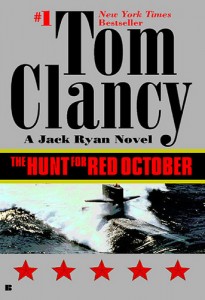A lot of folks hear I’m going to be published and automatically classify me with J.K. Rowling, James Patterson, or Dan Brown. Heck, I at least ought to be categorized with Joe Schmo who was featured on Oprah.
And why shouldn’t they think that? Those are the authors they see. That’s what it means to them to be published.
For those of us who have actually gotten a peek behind the curtain, we realize it just ain’t so. Those are best-selling authors. See my post on best sellers to understand the quantities that have to move to make a best seller. Those are huge numbers, but very few authors sell that many books.
So what do you need to sell to make a living? Let’s do some math.
Let’s say you want to make $50,000, the median household income in the US at this time. I know, I know, that’s nothing in some places, but if you’re a writer you don’t have to live in San Francisco. So you want to take home $50k after taxes. That means you’ll probably need to make $62,000 before taxes. That’s our goal.
So here are some numbers with conservative royalties.
What authors make on a paperback
8% royalty (authors usually make 8 – 12 % on paperbacks)
15% agent fee
6.8% net royalty rate
To net $50k with only PAPERBACK sales would you need:
$911,765 in sales required in the year
$7.99 per book
114,113 books sold
What authors make on a hardback
10% royalty (it’s common to make 10-15%)
15% agent fee
8.5% net royalty rate
To net $50k with only HARDBACK sales would you need:
$729,412 in sales in the year
$25.00 per book
29,176 books sold
If you have previous books that are still selling, they all count. Make foreign sales, they count. Can produce two books per year, maybe one in a different genre, they count. Of course, this doesn’t factor in discounts and the corresponding reduced royalty rates. Nor does it factor in costs of being in business for yourself, including taxes, insurance, etc. But this is enough to get a rough idea of numbers.
100,000 paperbacks is a BIG number. However, you usually mix and match.
Let’s say you sell 5,000 hardbacks. 5,000 x $25.00 = $125,000. $125,000 x .085 net royalty = $10,625. $62,000 – $10,625 = $51,375 to be made by the paperbacks when they come out the next year. At a 6.8% net royalty rate you have to make $755,515 or sell about 94,558 paperback copies.
Here it is in an easy to read list. Given the hardback sales shown below, you’d have to make up the rest of the $62,000 with the paperback sales on the right.
5,000 HB: 94,558 PB
10,000 HB: 75,002 PB
15,000 HB: 55,446 PB
20,000 HB: 35,890 PB
I know those seem like small numbers compared to the Publisher’s Weekly 2007 numbers I link to above. But most authors don’t sell that many books. Most authors are happy to sell 5,000 hardbacks.
But it’s not all bad news. I looked at a few authors on the PW list comparing hardback and paperback numbers. It seems any given author will sell twice the number of paperbacks that they do hardbacks. So perhaps selling somewhere between 15,000 to 20,000 hardbacks is the magic number.
20,000 hardbacks is a lot. But it seems doable for a writer who has been publishing for a few years. It’s not the 700,000 of a James Patterson. But it just might be enough to make, hold your breath, what the average household in America makes in a year.

















